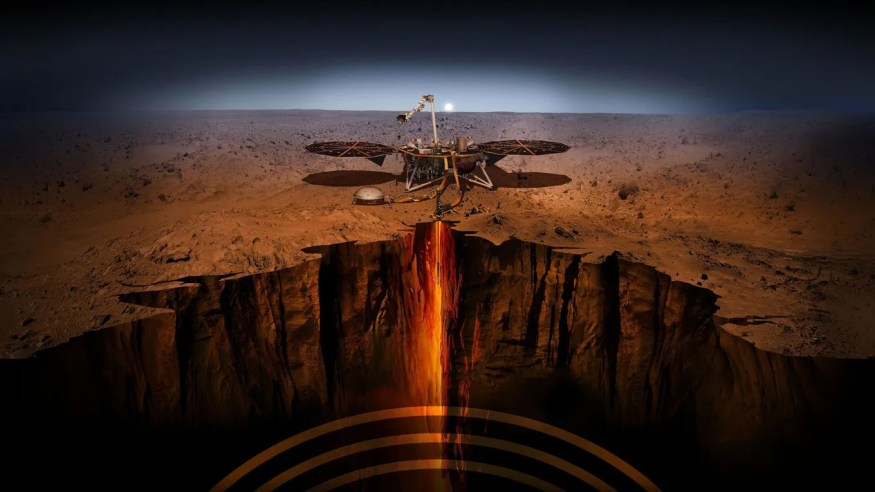NASA's InSight Mars Lander detected a large earthquake on Mars on the night of May 4, which was recorded by its onboard seismometer, SEIS. The quake lasted for several hours and was at least five times larger than any other previously recorded earthquake on the planet. The research about the event was published in the journal Geophysical Research Letters and presented at the AGU Fall Meeting in Chicago.
According to Taichi Kawamura, a planetary scientist at the Institut de physique du globe de Paris and co-leader of the Marsquake service, the earthquake detected by the InSight Mars Lander on May 4 was the largest one ever recorded on Mars. The energy released by this single earthquake was equivalent to the cumulative energy of all other earthquakes previously recorded on the planet.
John Clinton, a seismologist at the Swiss Federal Institute of Technology in Zürich and co-leader of the Marsquake service, noted that the earthquake was located more than 2000 kilometers (1200 miles) away from the InSight lander, but the waves it generated were so large that they almost saturated the seismometer on the lander. Seismology on Mars can provide scientists with insights into the planet's internal structure, including the presence of water, as well as the structure of its crust and deep interior. Most earthquakes on Mars are thought to be caused by fault movements, similar to those on Earth.

Dethroning Previous Quake
The previous largest earthquake recorded on Mars, which occurred in August 2021, had a magnitude of 4.2, while the May earthquake had a magnitude of 4.7, which is comparable to earthquake magnitudes on Earth. For the first time, the researchers were able to identify surface waves, which move along the crust and upper mantle of the planet, that traveled around the planet multiple times. The research about the earthquake and its surface wave paths and velocities was published in two additional papers in the journal Geophysical Research Letters on December 14.
The waves from the record-breaking earthquake on Mars lasted for about 10 hours, which is significantly longer than the duration of any other previously recorded earthquake on the planet. The epicenter of the earthquake was located close to, but outside of, the Cerberus Fossae region, which is the most seismically active area on Mars.
Unusually, the epicenter did not seem to be related to any known geological features, although it is possible that it could be connected to hidden features deeper in the crust. Earthquakes on Mars are typically divided into two types: those with high-frequency waves, which are characterized by rapid but shorter vibrations, and those with low-frequency waves, which involve slower movements with larger amplitudes.
The recent earthquake on Mars was unusual in that it exhibited characteristics of both high- and low-frequency earthquakes. Further research may reveal that previously recorded low- and high-frequency earthquakes are different aspects of the same phenomenon, according to Kawamura.

NASA InSight Lander Data Accumulation
The new research on the large earthquake on Mars is the first to describe and analyze the data from the event, which was released by the Mars Seismic Experiment for Interior Structure (SEIS) data service, the NASA Planetary Data System (PDS), and the Incorporated Research Institutions for Seismology (IRIS), in collaboration with the Marsquake service (MQS) catalog, in early October. The InSight lander is thought to be approaching the end of its operational life due to the accumulation of dust on its solar panels, which has reduced its power output over the four years since it landed on Mars in November 2018.
Despite this, the team was able to record the remarkable earthquake, which they consider to be a major success for the mission. According to Kawamura, this publication is the first in a series of papers that will be published by his team and partners, including NASA's Jet Propulsion Laboratory, ETH Zurich, France's National Centre for Space Studies, and UCLA, in AGU's special collection on the earthquake event.
These papers will provide further insights into the seismic activity on Mars and its significance for understanding the evolution of the planet. Just as seismological research helps geologists learn about the evolution of Earth, this kind of data can help planetary scientists understand more about the evolution of Mars. Kawamura encouraged readers to stay tuned for more exciting updates on the research.
Check out more news and information on Mars and Marsquakes in Science Times.












